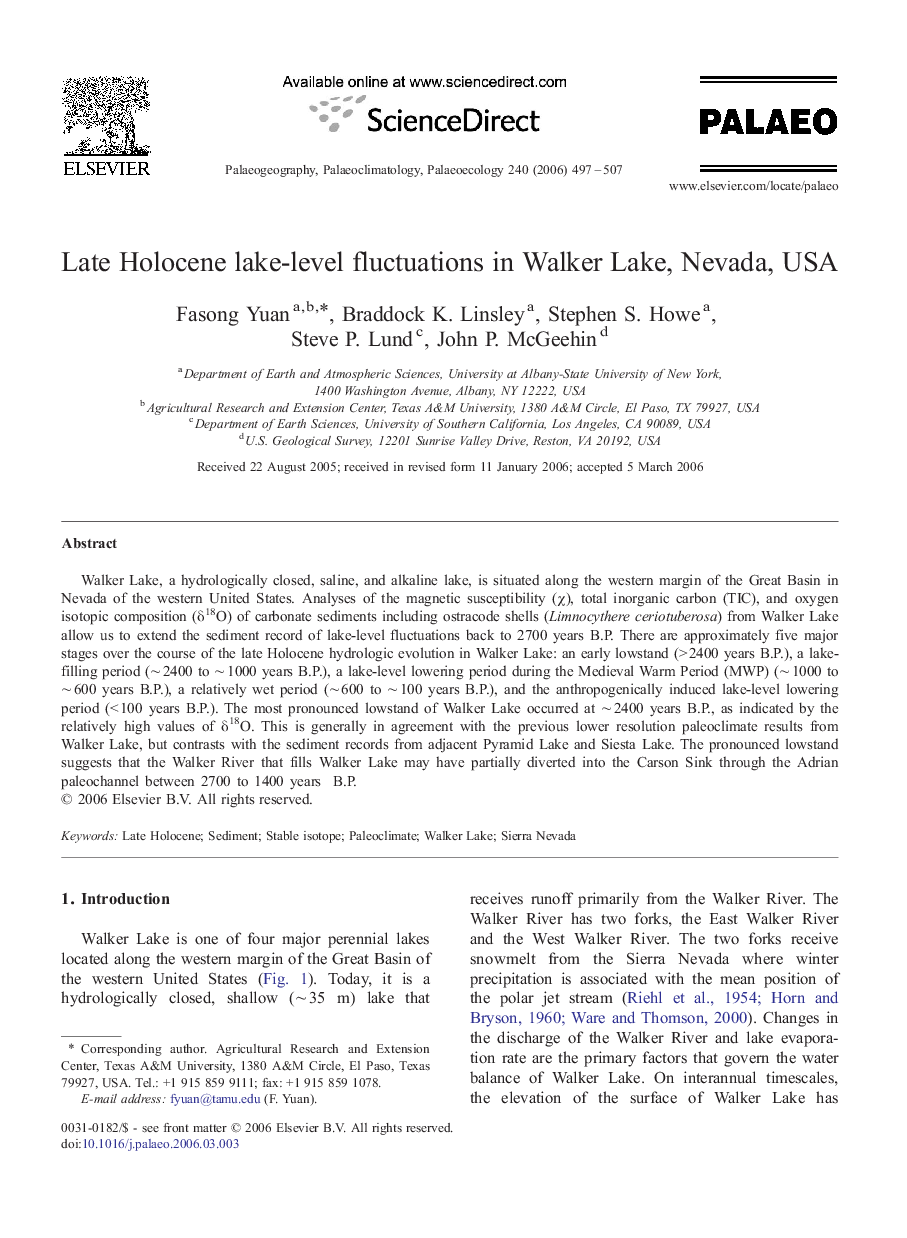| Article ID | Journal | Published Year | Pages | File Type |
|---|---|---|---|---|
| 4469271 | Palaeogeography, Palaeoclimatology, Palaeoecology | 2006 | 11 Pages |
Walker Lake, a hydrologically closed, saline, and alkaline lake, is situated along the western margin of the Great Basin in Nevada of the western United States. Analyses of the magnetic susceptibility (χ), total inorganic carbon (TIC), and oxygen isotopic composition (δ18O) of carbonate sediments including ostracode shells (Limnocythere ceriotuberosa) from Walker Lake allow us to extend the sediment record of lake-level fluctuations back to 2700 years B.P. There are approximately five major stages over the course of the late Holocene hydrologic evolution in Walker Lake: an early lowstand (> 2400 years B.P.), a lake-filling period (∼ 2400 to ∼ 1000 years B.P.), a lake-level lowering period during the Medieval Warm Period (MWP) (∼ 1000 to ∼ 600 years B.P.), a relatively wet period (∼ 600 to ∼ 100 years B.P.), and the anthropogenically induced lake-level lowering period (< 100 years B.P.). The most pronounced lowstand of Walker Lake occurred at ∼ 2400 years B.P., as indicated by the relatively high values of δ18O. This is generally in agreement with the previous lower resolution paleoclimate results from Walker Lake, but contrasts with the sediment records from adjacent Pyramid Lake and Siesta Lake. The pronounced lowstand suggests that the Walker River that fills Walker Lake may have partially diverted into the Carson Sink through the Adrian paleochannel between 2700 to 1400 years B.P.
